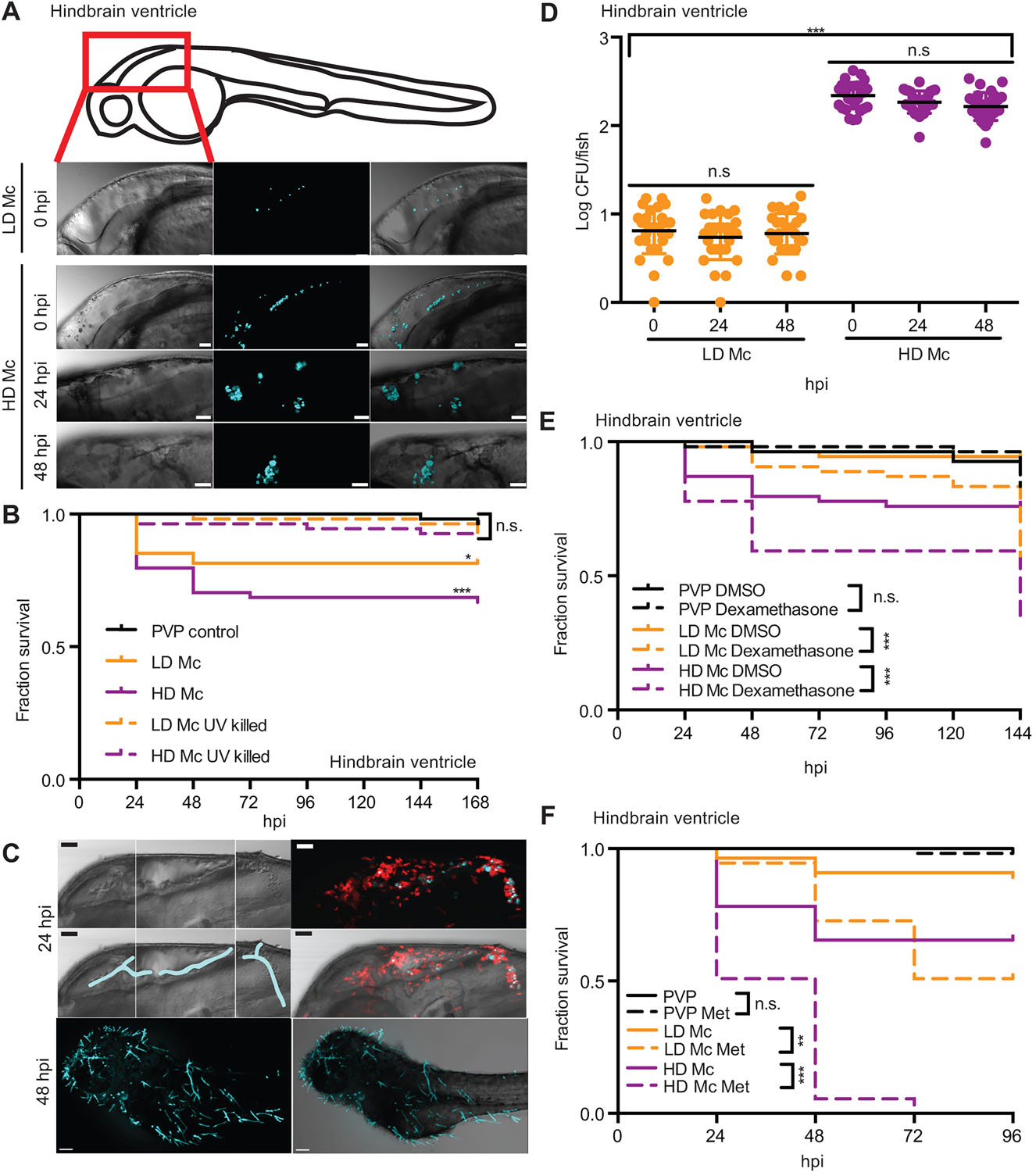Fig. 1
Zebrafish larvae are susceptible to the mucormycete M. circinelloides NRRL3631 in a hindbrain infection model. (A) AB wild-type zebrafish larva were injected in the hindbrain ventricle at prim-25 stage with a low dose (LD Mc, approximately 10 spores) or a high dose of Mucor circinelloides NRRL3631 (HD Mc, approximately 100 spores) and monitored over time (representative z-stacks: 28, 27, 23 and 40 sections every 3Ám, respectively; scale bar: 40Ám). (B) Injection of LD and HD Mc mucormycete spores into the hindbrain ventricle of prim-25 larvae induced significant mortality. Hindbrain ventricle infection with UV-killed spores did not cause significant mortality in AB wild-type larvae compared with the PVP control. (C) Hyphal growth invading the forebrain and ventral muscular layers from posterior hindbrain (representative images of HD Mc infection; top and middle right: DIC montage with filamentous growth highlighted in blue; fluorescent z-stacks: 61 sections every 4.4Ám; scale bar: 50Ám, upper two panels). Dead fish, previously injected with viable spores, presented with filamentous fungal growth (representative image from LD Mc hindbrain injection; cyan, spores/hyphae; red, macrophages; scale bar: 100Ám). (D) Spores remained viable within the zebrafish larvae over the time course of 48h post-infection (h.p.i.). (E,F) Larval immunosuppression increases susceptibility to infections with M. circinelloides NRRL3631. (E) AB wild-type zebrafish larvae treated with dexamethasone after hindbrain ventricle injection showed significantly increased mortality at the low as well as the high infection dose compared with DMSO-treated infected larvae. (F) In comparison to untreated infected Tg(mpeg1:G/U:NfsB-mCherry) larvae, larval treatment with metronidazole (Met) significantly increased susceptibility to low- and high-dose hindbrain ventricle infection with fungal spores.

